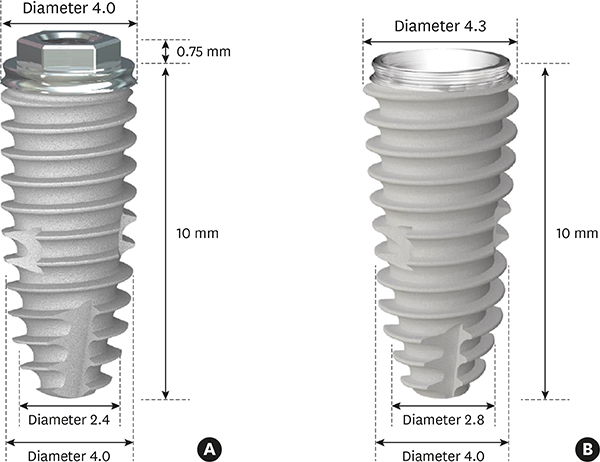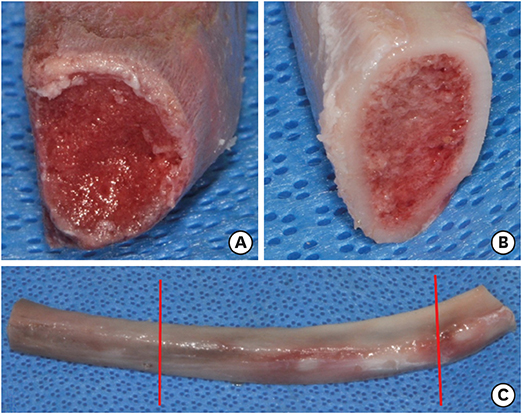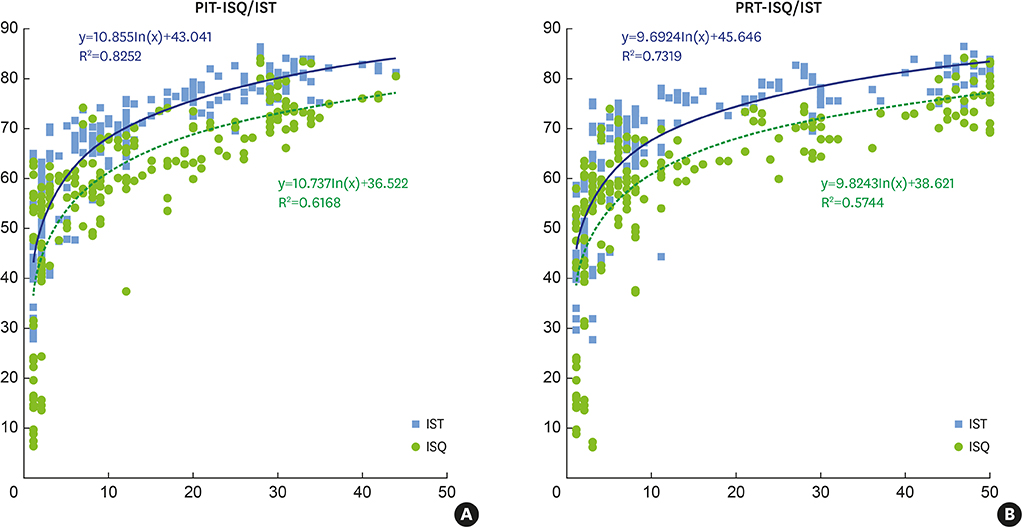J Periodontal Implant Sci.
2020 Feb;50(1):56-66. 10.5051/jpis.2020.50.1.56.
Comparison of implant stability measurements between a resonance frequency analysis device and a modified damping capacity analysis device: an in vitro study
- Affiliations
-
- 1Department of Periodontics, One-Stop Specialty Center, Seoul National University Dental Hospital, Seoul, Korea.
- 2Department of Dentistry, Ajou University School of Medicine, Suwon, Korea.
- 3Department of Preventive Dentistry & Public Oral Health, Seoul National University School of Dentistry, Seoul, Korea.
- 4Department of Orthodontics, Seoul National University Dental Hospital, Seoul, Korea.
- 5Department of Prosthodontics, One-Stop Specialty Center, Seoul National University Dental Hospital, Seoul, Korea.
- 6Department of Periodontology and Dental Research Institute, Seoul National University School of Dentistry, Seoul, Korea. ymlee@snu.ac.kr, periokoo@snu.ac.kr
- KMID: 2470831
- DOI: http://doi.org/10.5051/jpis.2020.50.1.56
Abstract
- PURPOSE
A stability-measuring device that utilizes damping capacity analysis (DCA) has recently been introduced in the field of dental implantology. This study aimed to evaluate the sensitivity and reliability of this device by measuring the implant stability of ex vivo samples in comparison with a resonance frequency analysis (RFA) device.
METHODS
Six implant beds were prepared in porcine ribs using 3 different drilling protocols to simulate various implant stability conditions. Thirty-six pork ribs and 216 bone-level implants measuring 10 mm in height were used. The implant beds were prepared using 1 of the following 3 drilling protocols: 10-mm drilling depth with a 3.5-mm-diameter twist drill, 5-mm drilling depth with a 4.0-mm-diameter twist drill, and 10-mm drilling depth with a 4.0-mm-diameter twist drill. The first 108 implants were external-connection implants 4.0 mm in diameter, while the other 108 implants were internal-connection implants 4.3 mm in diameter. The peak insertion torque (PIT) during implant placement, the stability values obtained with DCA and RFA devices after implant placement, and the peak removal torque (PRT) during implant removal were measured.
RESULTS
The intraclass correlation coefficients (ICCs) of the implant stability quotient (ISQ) results obtained using the RFA device at the medial, distal, ventral, and dorsal points were 0.997, 0.994, 0.994, and 0.998, respectively. The ICCs of the implant stability test (IST) results obtained using the DCA device at the corresponding locations were 0.972, 0.975, 0.974, and 0.976, respectively. Logarithmic relationships between PIT and IST, PIT and ISQ, PRT and IST, and PRT and ISQ were observed. The mean absolute difference between the ISQ and IST values on a Bland-Altman plot was −6.76 (−25.05 to 11.53, P<0.05).
CONCLUSIONS
Within the limits of ex vivo studies, measurements made using the RFA and DCA devices were found to be correlated under a variety of stability conditions.
Keyword
MeSH Terms
Figure
Reference
-
1. Oh JS, Kim SG, Lim SC, Ong JL. A comparative study of two noninvasive techniques to evaluate implant stability: Periotest and Osstell Mentor. Oral Surg Oral Med Oral Pathol Oral Radiol Endod. 2009; 107:513–518.
Article2. Zix J, Hug S, Kessler-Liechti G, Mericske-Stern R. Measurement of dental implant stability by resonance frequency analysis and damping capacity assessment: comparison of both techniques in a clinical trial. Int J Oral Maxillofac Implants. 2008; 23:525–530.3. Becker W, Hujoel P, Becker BE. Resonance frequency analysis: comparing two clinical instruments. Clin Implant Dent Relat Res. 2018; 20:308–312.
Article4. Jaramillo R, Santos R, Lázaro P, Romero M, Rios-Santos JV, Bullón P, et al. Comparative analysis of 2 resonance frequency measurement devices: Osstell Mentor and Osstell ISQ. Implant Dent. 2014; 23:351–356.5. Lages FS, Douglas-de Oliveira DW, Costa FO. Relationship between implant stability measurements obtained by insertion torque and resonance frequency analysis: a systematic review. Clin Implant Dent Relat Res. 2018; 20:26–33.
Article6. Choi HH, Chung CH, Kim SG, Son MK. Reliability of 2 implant stability measuring methods in assessment of various periimplant bone loss: an in vitro study with the Periotest and Osstell Mentor. Implant Dent. 2014; 23:51–56.
Article7. Bilhan H, Cilingir A, Bural C, Bilmenoglu C, Sakar O, Geckili O. The evaluation of the reliability of Periotest for implant stability measurements: an in vitro study. J Oral Implantol. 2015; 41:e90–5.8. Lekholm U, Zarb GA. Patient selection and preparation. In : Branemark PI, Zarb GA, Albrektsson T, editors. Tissue-integrated prostheses: osseointegration in clinical dentistry. Chicago (IL): Quintessence;1985. p. 199–209.9. Meredith N, Alleyne D, Cawley P. Quantitative determination of the stability of the implant-tissue interface using resonance frequency analysis. Clin Oral Implants Res. 1996; 7:261–267.
Article10. Brizuela-Velasco A, Álvarez-Arenal Á, Gil-Mur FJ, Herrero-Climent M, Chávarri-Prado D, Chento-Valiente Y, et al. Relationship between insertion torque and resonance frequency measurements, performed by resonance frequency analysis, in micromobility of dental implants: an in vitro study. Implant Dent. 2015; 24:607–611.
Article11. Koo TK, Li MY. A guideline of selecting and reporting intraclass correlation coefficients for reliability research. J Chiropr Med. 2016; 15:155–163.
Article12. Lee J, Lim JH, Lee J, Kim S, Koo KT, Seol YJ, et al. Efficacy of sonic-powered toothbrushes for plaque removal in patients with peri-implant mucositis. J Periodontal Implant Sci. 2015; 45:56–61.
Article13. Geckili O, Bilhan H, Cilingir A, Mumcu E, Bural C. A comparative in vitro evaluation of two different magnetic devices detecting the stability of osseo-integrated implants. J Periodontal Res. 2012; 47:508–513.
Article14. Atsumi M, Park SH, Wang HL. Methods used to assess implant stability: current status. Int J Oral Maxillofac Implants. 2007; 22:743–754.15. Açil Y, Sievers J, Gülses A, Ayna M, Wiltfang J, Terheyden H. Correlation between resonance frequency, insertion torque and bone-implant contact in self-cutting threaded implants. Odontology. 2017; 105:347–353.
Article16. Han HC, Lim HC, Hong JY, Ahn SJ, Han JY, Shin SI, et al. Primary implant stability in a bone model simulating clinical situations for the posterior maxilla: an in vitro study. J Periodontal Implant Sci. 2016; 46:254–265.
Article17. Santamaría-Arrieta G, Brizuela-Velasco A, Fernández-González FJ, Chávarri-Prado D, Chento-Valiente Y, Solaberrieta E, et al. Biomechanical evaluation of oversized drilling technique on primary implant stability measured by insertion torque and resonance frequency analysis. J Clin Exp Dent. 2016; 8:e307–11.
Article18. Turkyilmaz I, Sennerby L, Yilmaz B, Bilecenoglu B, Ozbek EN. Influence of defect depth on resonance frequency analysis and insertion torque values for implants placed in fresh extraction sockets: a human cadaver study. Clin Implant Dent Relat Res. 2009; 11:52–58.
Article19. Lachmann S, Laval JY, Jäger B, Axmann D, Gomez-Roman G, Groten M, et al. Resonance frequency analysis and damping capacity assessment. Part 2: peri-implant bone loss follow-up. An in vitro study with the Periotest and Osstell instruments. Clin Oral Implants Res. 2006; 17:80–84.20. Falco A, Berardini M, Trisi P. Correlation between implant geometry, implant surface, insertion torque, and primary stability: in vitro biomechanical analysis. Int J Oral Maxillofac Implants. 2018; 33:824–830.
Article21. Lachmann S, Jäger B, Axmann D, Gomez-Roman G, Groten M, Weber H. Resonance frequency analysis and damping capacity assessment. Part I: an in vitro study on measurement reliability and a method of comparison in the determination of primary dental implant stability. Clin Oral Implants Res. 2006; 17:75–79.22. Marquezan M, Osório A, Sant'Anna E, Souza MM, Maia L. Does bone mineral density influence the primary stability of dental implants? A systematic review. Clin Oral Implants Res. 2012; 23:767–774.
Article
- Full Text Links
- Actions
-
Cited
- CITED
-
- Close
- Share
- Similar articles
-
- Reliability of implant stability measuring devices depending on various clinical conditions: an in vitro study
- Effects of Striking and Bone Conditions on Damping Capacity Assessment: An in vitro Study
- An evaluation of the primary implant stability and the immediate load-bearing capacity according to the change of cortical bone thickness
- IN VITRO COMPARATIVE STUDY BETWEEN ISQ AND PERIOTEST? VALUES ON THE IMPLANT STABILITY MEASUREMENTS ACCORDING TO THE INCREASED EFFECTIVE IMPLANT LENGTH
- The evaluation of implant stability measured by resonance frequency analysis in different bone types







